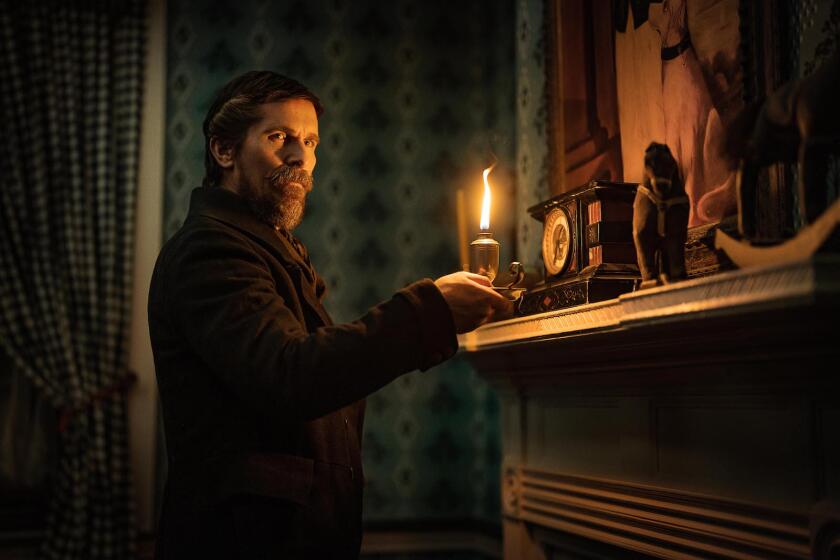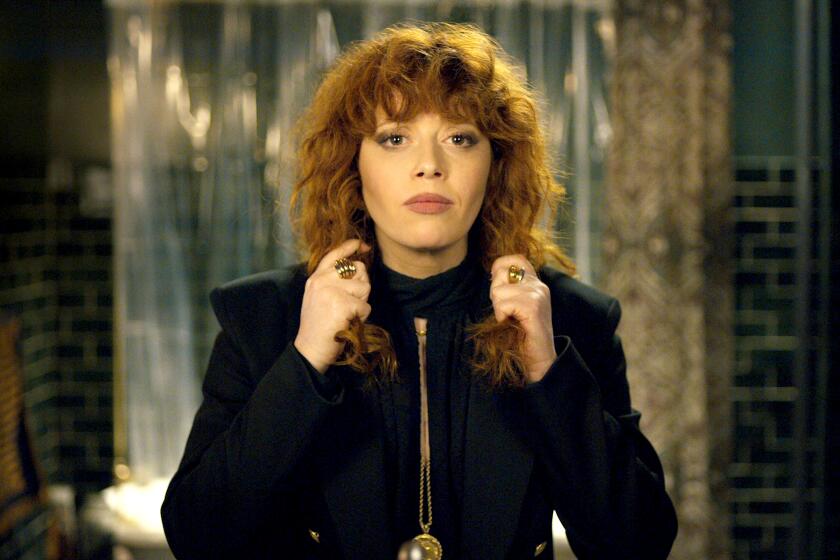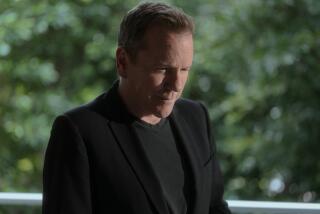‘The Pale Blue Eye’ explained: Inside Netflix’s new Edgar Allan Poe mystery
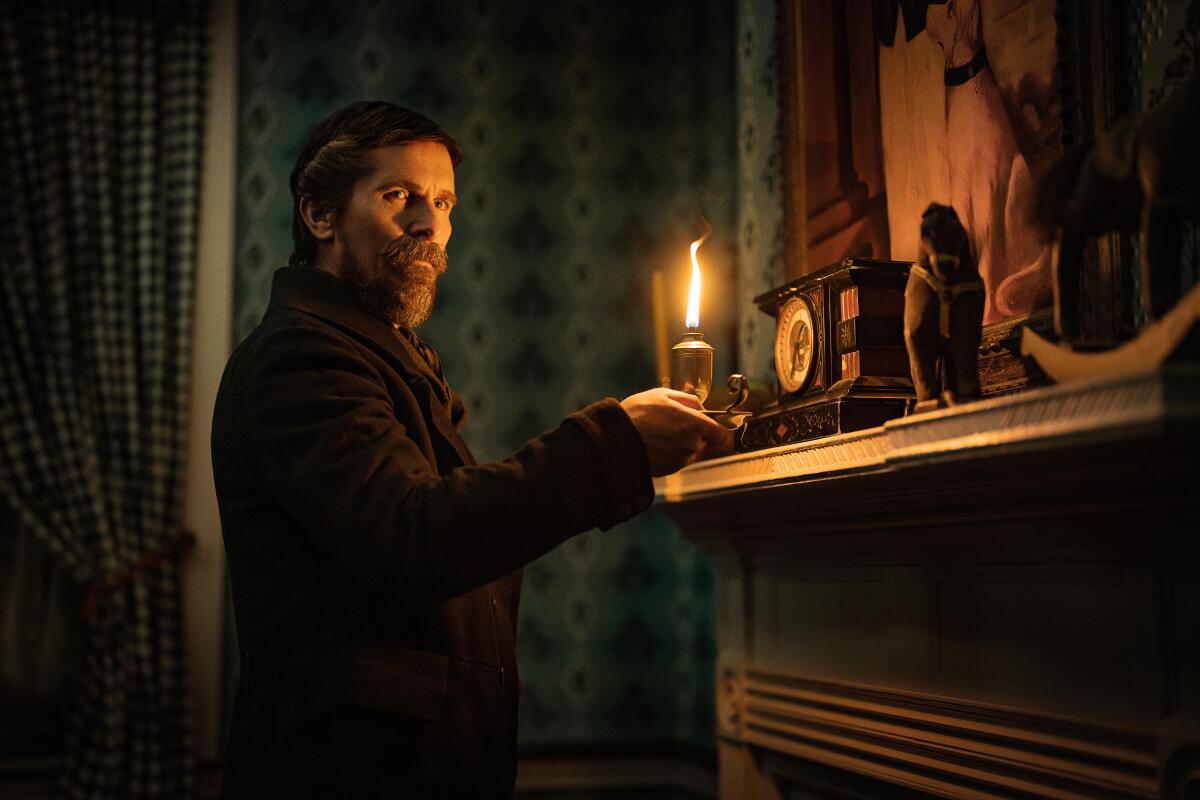
Scott Cooper and Christian Bale want to push their audience into challenging spaces.
“The great danger is doing safe work,” says Cooper, the writer-director-producer of the elegant whodunit “The Pale Blue Eye,” streaming Friday on Netflix. “And Christian is on that ledge with me [to] explore the darker corners of the human psyche.”
After the elegiac crime-thriller “Out of the Furnace” and masterful western “Hostiles,” the shrewd Louis Bayard adaptation marks the duo’s third collaboration, continuing their joint interest in risk-taking cinema of disquieting themes. It’s one that rewards attention, defying what Cooper calls “the most impatient of ages” when it comes to media consumption defined by instant gratification. “I stand against that,” he adds. “A film shouldn’t be like an enema [you want to get over with] quickly. You should be transported somewhere.”
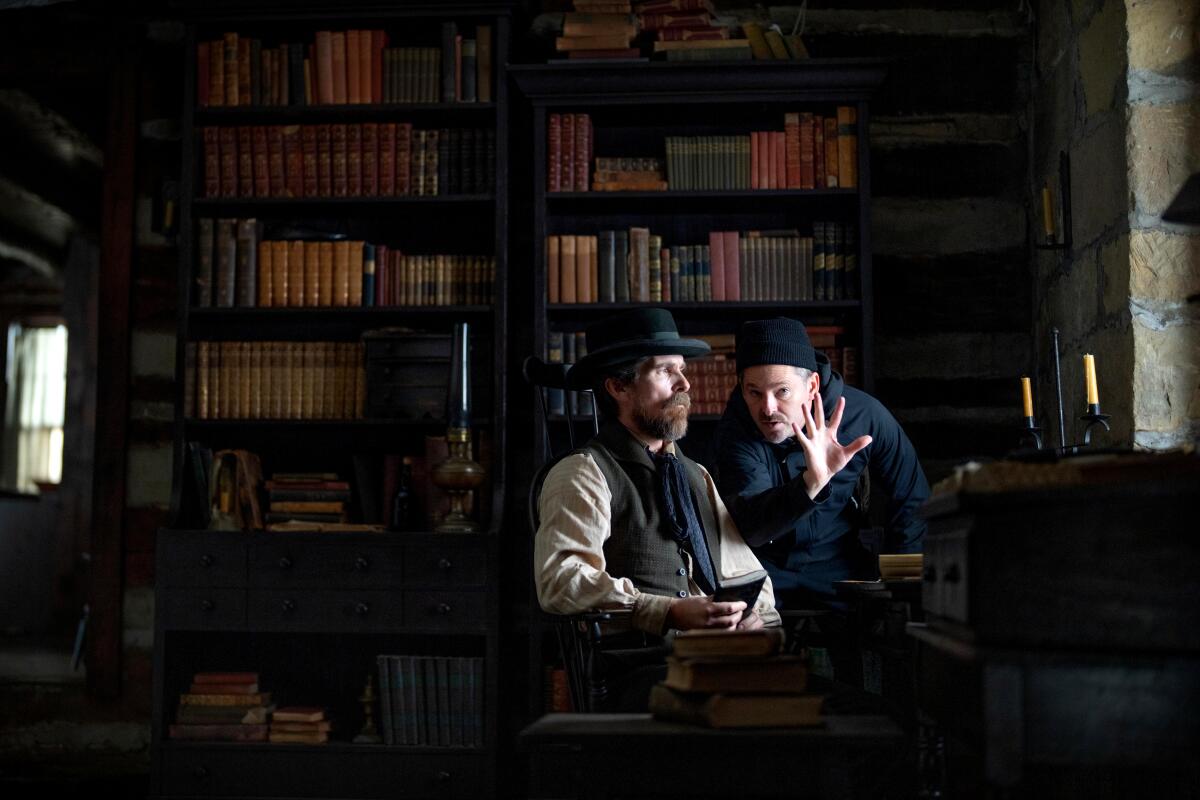
Transport the audience somewhere, “The Pale Blue Eye” does. The setting is West Point in the 1830s, where Bale’s Augustus Landor — a cagey, grief-stricken veteran detective — is hired to solve the gruesome killing of a cadet whose heart had been brutally excised. Co-star Harry Melling plays an eccentric student with literary sensibilities unwelcome at the rigid military academy: a young and fictionalized Edgar Allan Poe. The gentle yet opinionated loner — not the “Master of the Macabre” just yet — teams up with Landor for the investigation.
Bayard’s book was recommended to Cooper by his dad, a former English and literature instructor with a rich collection of Poe’s writings at their home in Virginia, where Cooper spent his formative years, like Poe himself. Cooper has been contemplating the chief questions of “The Pale Blue Eye” since reading it after directing his first film, “Crazy Heart.”
“Crazy Heart” director teams with star Christian Bale for third time with the 1830 West Point-set murder-mystery, “The Pale Blue Eye,” which features Harry Melling as a young Edgar Allan Poe.
“What drives someone to madness? What causes morality to erode in decent people? The film uses fiction to explore a truth that’s familiar to anyone who’s turned Poe’s pages, which is, real horrors seldom have easy explanations,” he says.
Bale’s lifelong appreciation of Poe was shaped differently.
“Watching TV in England when I was growing up, [I’d see] films that I didn’t know were Edgar Allan Poe [adaptations],” Bale said. “When I started to look at his work with more intention, it was a surprise [to discover] how much he has infiltrated culture and my brain without me even knowing that it was him doing so. I love ‘The Murders in the Rue Morgue,’ ‘The Mystery of Marie Rogêt’ and ‘The Raven.’”
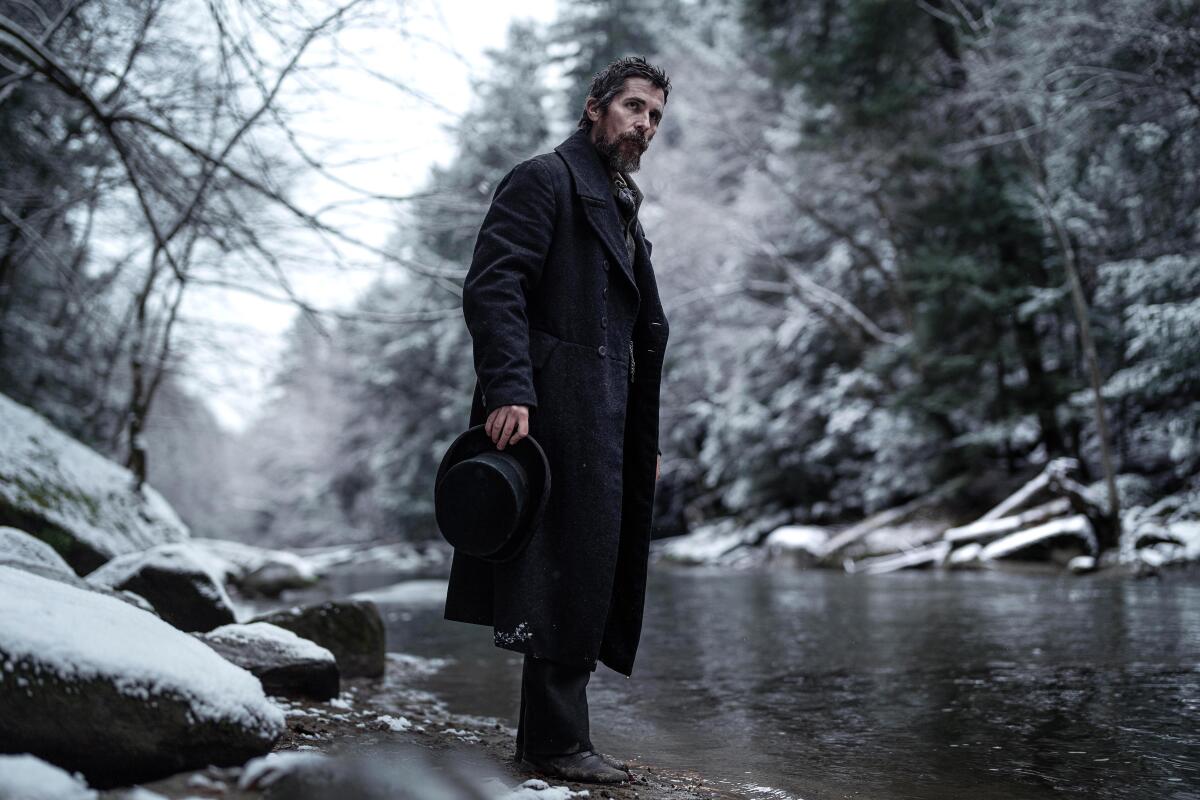
To Cooper, it was a risk to adapt a detective story unfolding around the very man who bequeathed detective fiction to the world. In line with the source’s rhythm, he kept a close eye on how much information he would disclose to the audience, revealing neither too much nor too little in order to make it a satisfying experience for careful viewers. Sustaining that meant a close collaboration with his editor, Dylan Tichenor, as well as star-producer Bale, who crafted a layered performance that would play a little differently in repeat watches.
“There’s sometimes no way of knowing how something is going to land. So [I was] open to giving Scott and Dylan different choices in [key] scenes,” Bale says. “And I actually found that to be a lot of fun. It’s not that it changes who Landor is. But hopefully, people will understand more on a second viewing.”
We surveyed The Times TV team to come up with a list of the 75 best TV shows you can watch on Netflix. As in, tonight.
Cooper adds, “Christian’s performance is of great precision and restraint. [Landor] is a legendary constable. To become legendary, you have to be a keen, invisible observer and not be a part of the story, which Christian did beautifully.”
Bale also crafted a deep backstory for his character, alongside personality traits that came to both define and confront the man Landor is.
“He’s someone who’s maintained control his entire life. [But] he’s beginning to lose his grip on that, breaking every rule that he’s lived by,” Bale says. “I think that’s why Poe comes to resonate so much with him. He is learning a great deal [from] this irritating young man who nobody likes or trusts but ends up being the most trustworthy character in the whole story.”
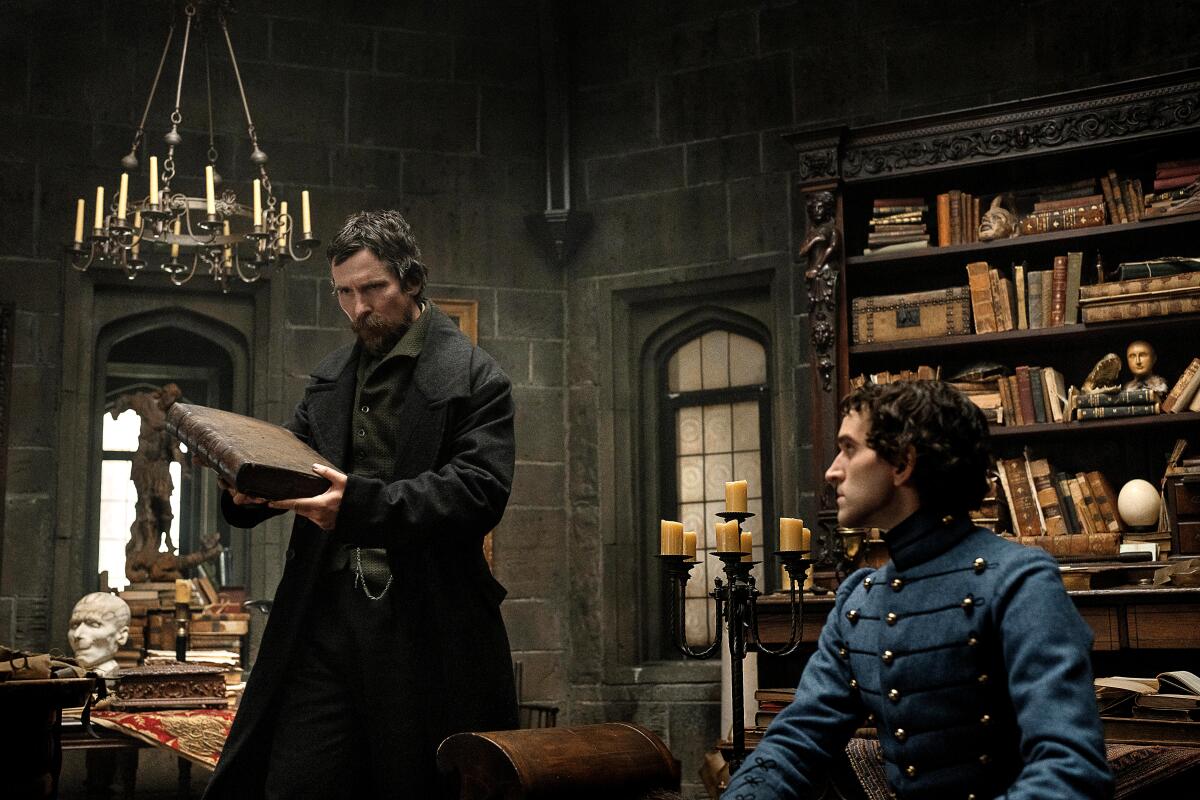
Bale perceived Poe and Landor’s unlikely relationship as akin to that of father and son, one that develops after the loss of Landor’s daughter Mattie, introduced in the film through thoughtful flashbacks.
“Somebody as intense and masculine as Landor is realizing that he’s missed a great deal in assuming that he has time,” Bale says. “It brings in regret because he wasn’t living every moment with regard to the people within his own life. [There are] things he should have said that he never said. What if Poe had been introduced into his life earlier? Would that have made him a better father?”
As Poe, Melling was a revelation to both Cooper and Bale from Day 1, with Bale calling him “as good as it gets.”
The complete guide to home viewing
Get Screen Gab for everything about the TV shows and streaming movies everyone’s talking about.
You may occasionally receive promotional content from the Los Angeles Times.
“Harry really understood that we were creating a character that defies what we think of Poe,” Cooper adds. “He approached him as someone warm, witty and humorous, prone to poetic and romantic flourishes, looking for a connection.”
In bringing the wintry tale to life, Cooper crafted visual aesthetics with gothic hues, making sure that period details (decidedly free of nostalgia) receded into the background and that the focus remained on story and atmosphere.
Alongside his longtime cinematographer, Masanobu Takayanagi, he drew inspiration from such masters as Caspar David Friedrich and Rembrandt, as well as Stanley Kubrick’s “Barry Lyndon” for the candlelit interiors.
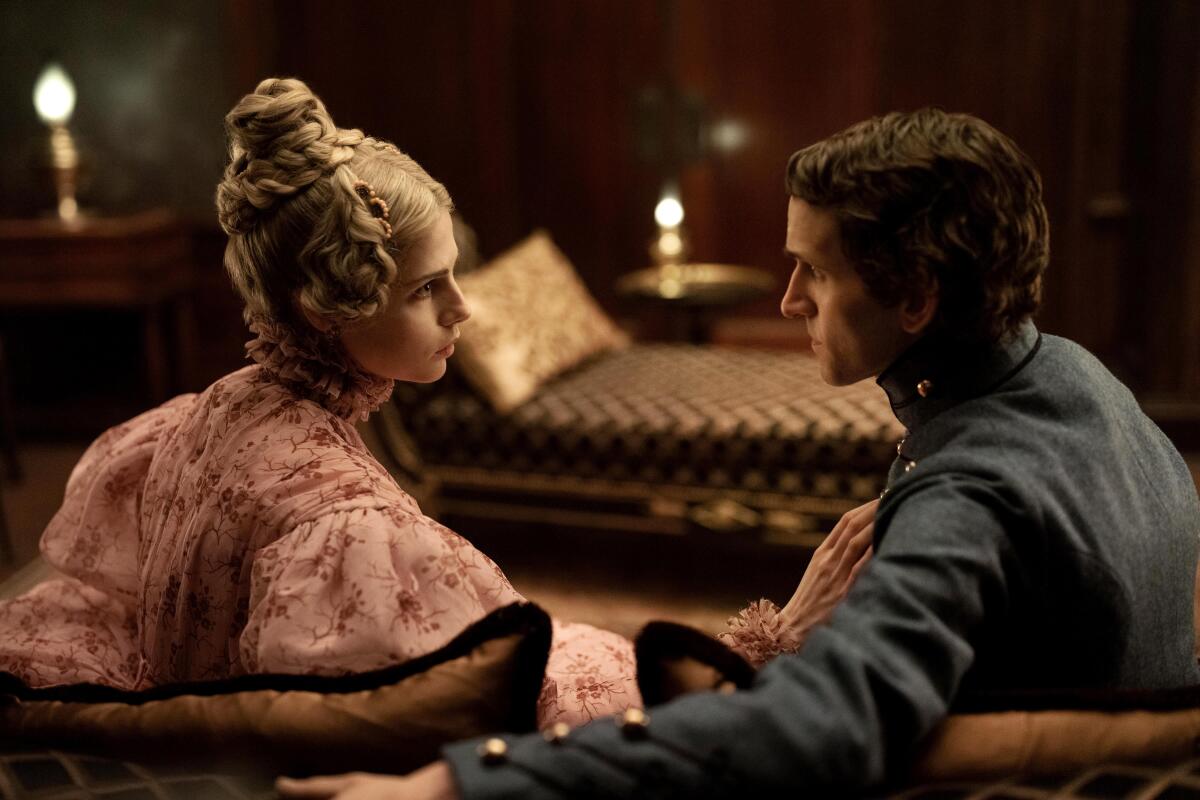
“We wanted it to feel bare, unforgiving and brutal, with a very narrow color palette, almost shooting the film in black and white,” Cooper says. To that end, his trusted production designer, Stefania Cella, designed the sets and furniture in blacks, and costume designer Kasia Walicka-Maimone’s blue cadet uniforms provided essential contrast, pops of color against the muted landscape of frosty western Pennsylvania, where the production took place.
Elsewhere, Canadian makeup artist and prosthetics designer Adrien Morot was tasked with creating the spine-tingling corpses.
“The most authentic cadavers that I’ve ever seen,” says Cooper. “So lifelike that I would look over at one of the actors looking at his cadaver, and you could see them having an unsettling out-of-body experience. [Adrien] would painstakingly re-create every hair on their body, which was hand-sewn in.”
“He no doubt had to go through airport security [with those],” Bale adds with a chuckle.
Meanwhile, the location shoot’s subzero temperatures were something to behold.
“It was a brutal shoot,” Cooper says. “But I take great pleasure in it. Whether Christian and I are shooting in monsoonal rains at 10,000 feet above sea level in ‘Hostiles’ or the unforgiving cold, the elements recede from me [while] watching him build those characters.”
“It made it memorable,” recalls Bale. “Imagine this film in summertime. That wouldn’t work at all. That amount of cold sharpens your brain as long as you’re not going into hibernation mode. Your survival instinct kicks in. [We saw] the most incredible sunrises and frosted lakes. Nobody who makes films ever wanted to work in an office.”
More to Read
Only good movies
Get the Indie Focus newsletter, Mark Olsen's weekly guide to the world of cinema.
You may occasionally receive promotional content from the Los Angeles Times.
